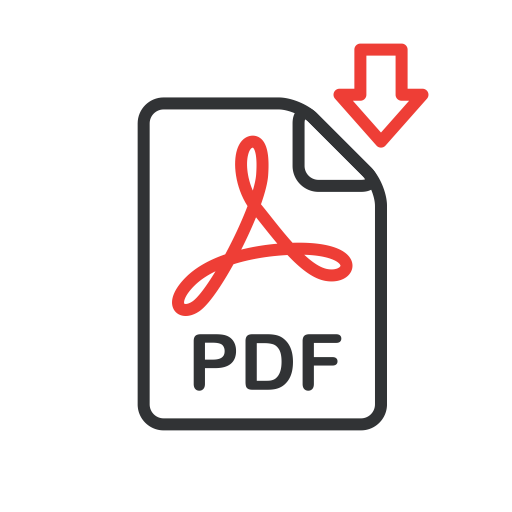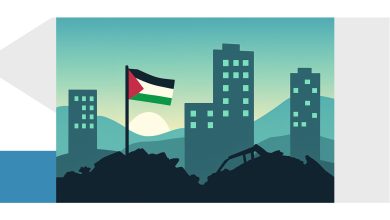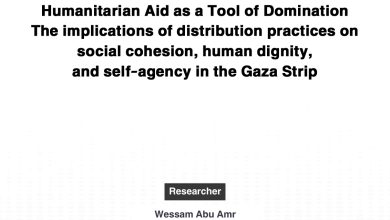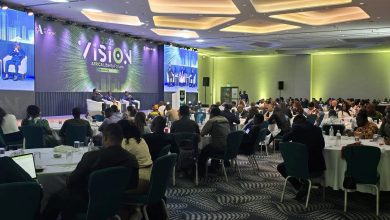Policy Brief – The Motives and the Consequences of the Gaza Great Return March
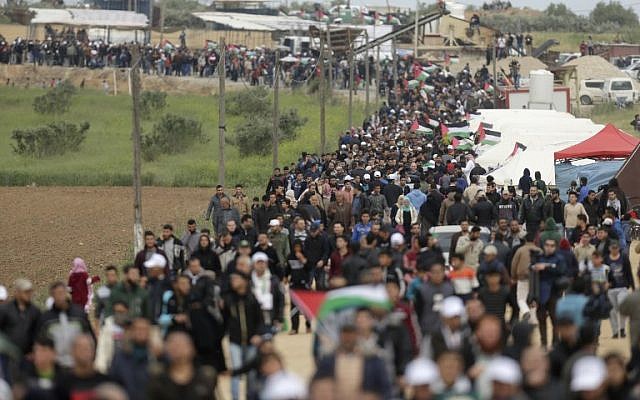
By Omar Shaban
Why it is happening:-
For four consecutive Fridays, tens of thousands of Gaza’s gather close which began on Friday, 30/3/2018 to the Gaza border with Israel what became known as “Gaza Great Return March, GRM. According to several reports, it can be said that the most the important motive for the Great Return Marches, are the tragic conditions in which Gaza’s live. Gaza has been besieged for more than 11 years. It suffers from a severe Palestinian division, and its people are suffering from a shortage of electricity, water scarcity, and inability to travel. Not to forget the three previous wars that destroyed everything in the Gaza Strip. Not to mention the failure of both options; the peace process led by the PA and armed resistance led by Hamas. The GRM was driven by the siege, the high level of unemployment, the ongoing consequences, up to today of the three wars, and the prevention of freedom of movement. However, raising the slogan “right of return” for the march was a unifying factor that helps to mobilize tens of thousands of participants. This slogan goes beyond any ideologies or socio-political issues. The march has achieved part of the goals, which is to have peaceful movements that begin with the commemoration of Land Day on March 30 till May, 15, the 70th anniversary of the Palestinian Nakba.
This was mainly done in order to cast the light on the right of return and the need to implement paragraph 11 of UN resolution 194. In addition, politicians and analysts emphasize that “the great return marches” have surprised Israel and even the Palestinian factions. In fact, the Palestinian and Israeli media have rushed to cover everything happening on the borders and read what the organizers, the Palestinian factions and the PNA must do to exploit this event to serve the national cause. Israel has also considered what it must do before the marches reach their climax on the 70th anniversary of the Nakba on 15/5/2018. The marches have revealed the importance of peaceful popular movement as an effective strategy with a local, national, and international impact to restoring people’s rights. The major rule for continuous marching is adherence to the rules of peaceful actions and removing any manifestations of violence. Otherwise, marches will lose their credibility and respect for human rights, and Israel will succeed in its claims to the international community.
Israel and the Marches:-
In fact, what make the peaceful marches from Gaza exceptional are not the marches themselves, but how Israel has reacted to these marches in Gaza. Israel has failed to develop the proper mechanisms required to combat the demonstrations. Israel could not disperse people without using violence and perhaps it may intend to initiate a new war in Gaza. Of particular concern for the Israelis, the march has provided the people with a new struggle strategy, which can be agreed upon between the Palestinian factions, as opposed to previous attempts at unified resistance which have failed due to a lack of consensus. The continuation of the march of return may affect the situation in the West Bank and the Arab regions inside Israel.
Therefore, from its initiation, Israel has been concerned about the preparations for the Great return marches. Analysts considered that Israel has overexpressed its fear from the marches, even weeks before the start of the march due to a lack of understanding by Israel of the meaning of the tactical march and its strategic implications. However, weeks ago, Israel launched a massive media campaign, in which all the security, political and media agencies warned civilians from participating in the march, by threatening to punish anyone who ventured near the borders. The Israeli reaction to the marches has been characterized by excessive use of force. When Israel and Gaza are mentioned the first thing comes to mind is war and violence. But the marches of return and the peaceful popular movement have changed the equation. The scene looked different. No Israeli solider was wounded in the marches ,while more than 30 protestors were killed and 3,000 were injured. These marches came to refresh the memory of the international community that there are a marginalized people who live under siege , who have been deprived of their basic needs.
Opposing the ongoing normalization between Israel and Arab countries:-
Israeli political analysts believe that the Palestinians won the battle of the media, where from the very beginning; several pictures were taken by Palestinian photographers and shown to international magazines and newspapers including Israeli ones. These pictures included dozens of unarmed, under siege, poor, and unemployed Palestinians who were injured by the Israeli snipers. This march came to revive a fateful issue that Israel has written off from the final status agenda – the Palestinian refugees’ case. This march may constitute a serious blow to the Arab countries move towards normalization with Israel. Therefore, Israel is working brutally to avoid the return of the Palestinian issue to the international table. This was demonstrated by the actions of Gadi Eizenkot, the Chief of General Staff of the Israel Defense Forces, whom ordered the Israeli soldiers shoot to disperse and kill the demonstrators. At the same time, a meeting was supposed to be held between the Saudi Crown Prince Mohammed bin Salman and the head of the Israeli National Security Council, Meir Ben Shabat. This meeting reflects the progress of the Israeli-Saudi relations, however, Israel is now afraid that the success of the Great march of return will negatively affect the process of normalization with the Arab countries, thus needing to rebuild everything from scratch. In addition, Israel is anxious that Netanyahu’s right-wing government will fail to continue the policy of intimidating the Jewish community from negotiating with the Palestinians by attempting to provoke a violent retaliation from the protestors. This is specially the case, if this march results in a new organized popular leadership supported by a mobilized people who are ready to sacrifice themselves, showing the world the degree to which non-violent, peaceful, and innocent Palestinians in Gaza are oppressed .This has the potential for a massive positive impact, where more countries will show solidarity with the Palestinian people, whereas more nations will boycott Israel.
As a matter of fact the international community has condemned the Israeli occupation forces actions against the peaceful Palestinian demonstrators. When UN Secretary-General Antonio Guterich issued a statement calling for the formation of a commission to conduct a fair and transparent investigation into the events of the Gaza march, he emphasized that Palestinians have the right to express themselves. To add to this, the United Nations (UN) High Commissioner for Human Rights Liz Throssell released a statement, condemning the “deplorable killing” of Palestinian protesters in Gaza. She has referred to a large number of injuries and deaths, indicating that the dead and wounded Palestinians were unarmed, did not pose a serious threat to the well-armed Israeli forces, not to mention that many Palestinians were killed far away from the security fence.
The Palestinian Authority and the marches:-
The Palestinian National Authority recognizes the importance of the great return march in strengthening its position not only nationally, but internationally, in the face of the leaks of the deal of the century and the underhand attempts at liquidating the Palestinian cause. Despite Fatah’s participation in the marches, which is considered the backbone of the Palestinian Authority it did not formally support the marches. Fatah movement who supports the president’s Mohammed Abbas philosophy focusing on peaceful demonstrations to reach the legitimate Palestinian goals. The Palestinian Authority has also condemned the Israeli army reaction against the peaceful Palestinian demonstrators and declared general mourning in the West Bank and the Gaza Strip as a sign of respect for the lives of Palestinians who were killed by Israeli snipers near the fence. The Palestinian Authority called on the Security Council, the United Nations and the International Council for Human Rights to form an international committee to investigate Israel’s crimes and hold Israel accountable for what it has done against the innocent civilians who are not posing any threat on its armed and protected forces. However, these marches did not resolve the PA fears that Hamas might invest in these marches to escape completing the reconciliation process with the PA. It seems that Hamas wanted to show the world that it is capable of guiding the Palestinians in mobilizing mass protest, even with a new strategy based on non-violence that is far from its mission which mainly focuses on armed resistance against the Israeli army. Hamas believes that people turning against the Israelis prevents them from turning against Hamas itself. Salah Bardwell, a member of the Political Bureau of Hamas stated that Fatah got the term “Palestinian reconciliation” wrong, where it has been understood as from hand to hand power-shift or in other words “empowerment”. This led Fatah to consider this statement as Hamas have refused to empower the government in the Gaza strip, consequently, the president Abbas has threatened to increase the sanctions on Gaza. This has made the US envoy send a tense message to Hamas to help resolve Gaza’s humanitarian crises in exchange for renouncing violence and disarming.
The increasing tension between the two parties Fatah and Hamas has led to more sanctions against the Gaza Strip. For instance, PA decision to not pay their employees’ salaries in Gaza, which literally lead to an economic crisis, and would inevitably cause long-term political and security implications. These might be like, the outbreak of mass protests against Hamas and its institutions, due to the fact that President Abbas attributed his sanctions on Gaza to Hamas’s refusal to allow the PA government to gain full-control of all the ministries and government facilities in Gaza. In fact, according to the statements made by Hamas leader, any public protest against Hamas due to the deterioration of the economic situation will immediately push the movement to immediately start a military confrontation with Israel. Several Hamas leaders have previously confirmed that they have informed the regional and international parties that Hamas is not willing to bear the consequences of the blockade imposed by Israel and Egypt as well as the PA sanctions against the Gaza strip and it will react by pushing a war with Israel or increase the level of public participation in the Great marches of return on the borders between Israel and the Gaza Strip. Hamas have also threatened to separate the Gaza Strip after full-stoppage for its services in Gaza. It is here a new party might come to the table to fill the gap, potentially the reformist Fatah movement represented by Mohammed Dahlan. Nevertheless, it seems that Egypt will not accept that the Gaza Strip will have a separate legitimate authority by itself.
Hamas and the Marches:-
Hamas did not hesitate to seize the calls that the Supreme National Committee, made for peaceful marching near the border on the anniversary of Land Day and the Nakba, Including human rights organizations, civil society organizations, and other Palestinian factions. The aim is to implement paragraph 11 of UN Resolution 194. This came after Hamas’ realization that the peaceful popular movement is more feasible at the moment for obtaining sympathy and international support rather than the armed option. In other words, Hamas was able to find a formula that serves it in all directions; Hamas has succeeded to turn people’s anger (the economic and social crises, high unemployment among workers and graduates, low standard of living, water pollution, etc.) against Israel after its failure to complete the reconciliation process. Not to forget that Hamas is concerned about not engaging in a new bloody war with Israel. This made Hamas announce that each martyr’s family will get $3000 and $300 per injured in the marches. Hamas emphasized that its main goal is the idea of (return), while the term (lifting the siege) is a part of the entire process. This was clear when the head of the Hamas political bureau, Ismail Hanyia, showed a large painting by Martin Luther, Mandela and Gandhi, written on it ‘The march of return and the lifting of the siege.’ Some representatives of civil society and activists considered this as a wrong move and that no political party is entitled to employ a sacred cause, such as the right of return for its private interests. The march of return is just about the right of return itself and by no means can it be used for other purposes. Nevertheless, the factions did not exert enough effort to protect youth’s lives, did not control them to achieve what is meant to be achieved “Peaceful resistance.” The rise of the factions to the idea of peaceful popular movement for the return of the refugees, and it seems that factions are also divided when it comes to peaceful marches.
Expected long-term regional impacts for the marches
The march of return has undermined the justification presented by the Israeli government that Palestinians cause is just a marginal problem. The Palestinian issue is an internal Israeli affair and it will not disappear on its own and will affect Israelis living conditions as a result of deteriorating conditions in the Gaza Strip. Israel has considered that the number of demonstrators on the second Friday (Jumah Al-Kawshook) was less, may diminish in the next round, especially after that now many Palestinian voices raised to object Hamas attempts to misuse the marches for their own political interest. The march could lead to an unprecedented explosion in Gaza although both Hamas and Israel are not interested in a new confrontation. Nevertheless, the caution that Israel and Hamas have shown is no guarantee that things will not escalate or that the situation will not get out of control in the near future.
End
Download paper:

